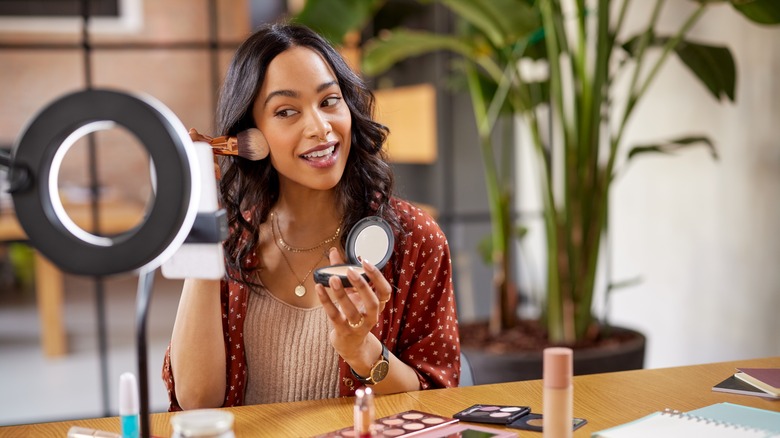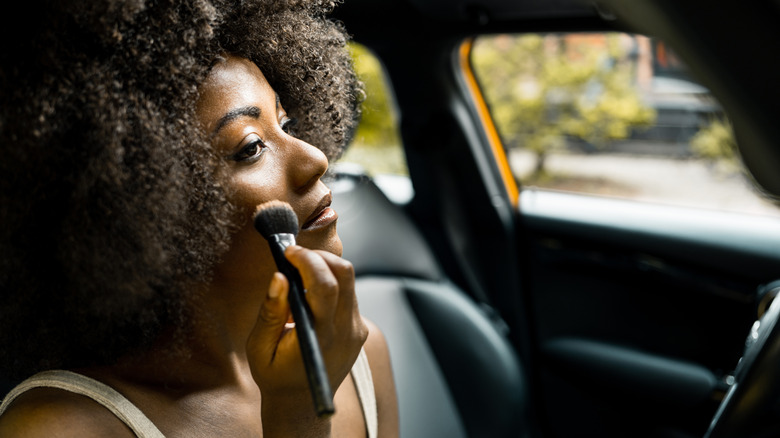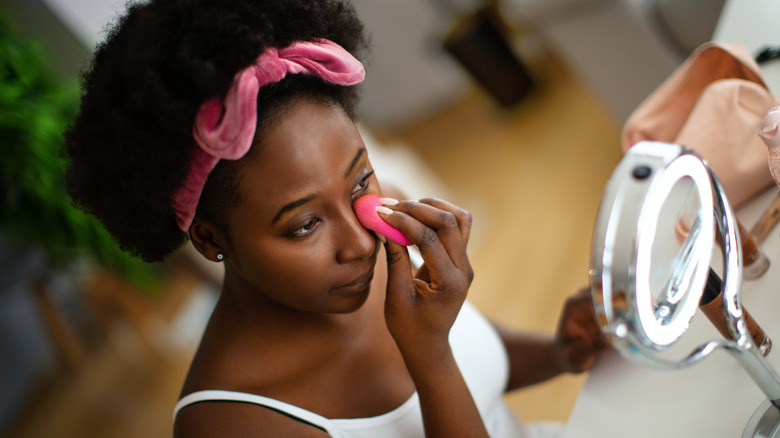Brushes Vs. Sponges: What's The Difference Between The Foundation Application Techniques?
As makeup lovers, we've gone through the motions of trying out different tools to get our makeup looking just right. And yet, somehow, through all that trial and error, the perfect method for applying foundation remains as elusive as ever. We end up with patchiness, thin coverage, the dreaded "cakey" look, and sometimes even missing spots where our tools don't reach. Why is this? Well, mostly a lack of understanding of the tools we're using.
When it comes to foundation application, we have several tools at our disposal, the most popular (and efficient) being brushes and beauty sponges, with alternatives including silicone makeup "sponges" and your very own fingers. But although brushes and sponges are the most tried-and-true methods for applying foundation, people still find themselves confused about how to achieve their desired look, whether full coverage and a flawless base or light coverage and a skin-like finish. When you don't arrive at your desired finish, it's usually because of the tool you've elected to use. "While personal preference certainly plays a role in what tool you reach for, you do need a strategy," makeup artist Cara Lovello tells Real Simple.
To get a successful result, you need the right tool for your desired look. Brushes should be your go-to for heavier makeup and fuller coverage, while sponges are ideal for lighter coverage.
Brushes for full coverage
As a rule of thumb, remember that brushes are for full coverage. The denser the bristles, the more even and heavy the coverage. If that's the look you're going for, it's a great reason to swap your makeup sponge for a foundation brush. The thing about brushes is that they are made to hold and spread product, not absorb it. Not only does this guarantee that most of the product being picked up by your brush will make it onto your face for a fuller coverage result, but it also means you don't need to use as much product. It's a win-win situation that will have your products lasting longer and your face looking more glam if you ask us.
The one downside to foundation brushes? According to makeup artist Krisann Figueiredo, one "disadvantage is that sometimes your application can get streaky depending on the brush you're using" (via Harper's Bazaar India). A quick fix for this is a couple of dabs with a damp beauty blender, or simply sticking to stippling brushes rather than a flat brush.
Sponges for a lighter touch
Beauty sponges, on the other hand, work better for buildable coverage and a lighter final look. "They are the best option if you want a seamless blend of foundation on the skin," makeup artist Chandni Goyal tells Harper's Bazaar India. From light coverage to full coverage, a beauty sponge can give you any result you want, as long as you're patient with layering your foundation until you reach your desired coverage.
When it comes to beauty sponges, the one thing you should always make sure of is wetting your sponge before using it. Yes, you should be wetting it each and every time. Otherwise, you run the risk of wasting product. Like Cara Lovello says, "Most people aren't getting their Beautyblender wet enough, and it's going to soak up too much of your foundation" (via Real Simple). Plus, wetting your sponge gives it that bouncy effect that blends foundation so seamlessly onto the skin, resulting in that natural, second-skin finish.
If you're opting for a sponge for all of its blending qualities, make sure to go for one of the many teardrop-shaped beauty sponges on the market. This shape is the best for getting into all the hard-to-reach places of your face, like the sides of the nose, corners of the eye, and temples.


